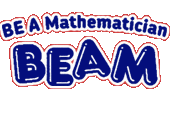Properties of Shape
This collection of resources supports the teaching of Properties of Shape in primary mathematics. These activities are linked to the year groups containing the corresponding content in the National Curriculum.
Here are some favourite activities selected by the NRICH team.
- Jig Shapes (Y1) Can you each work out what shape you have part of on your card?
- Poly Plug Rectangles (Y2) The computer has made a rectangle and will tell you the number of spots it uses in total. Can you find out where the rectangle is?
- Cubes (Y2) This feature brings together activities which all use cubes to support your thinking.
- Building Blocks (Y3) Here are some pictures of 3D shapes made from cubes. Can you make these shapes yourself?
- Stringy Quads (Y4) This practical problem challenges you to make quadrilaterals with a loop of string. You'll need some friends to help!
- Olympic Turns (Y5) This task looks at the different turns involved in different Olympic sports as a way of exploring the mathematics of turns and angles.
- Baravelle (Y6) What can you see? What do you notice? What questions can you ask?
These are just a few of the activities on Properties of Shape that you can find on the NRICH curriculum pages.
The activities below, taken from the STEM Learning website, complement the NRICH activities above.
Shape and Space
This video provides several ideas for learning to recognising shapes and describing their properties. including:
- learning to recognise shapes in the outdoor environment.
- shape sorting
- making shapes with elastic bands and describing their properties.
Paper Magic: Folding Polygons
Use coloured paper to create polygons including a square, triangles, kites, rhombi, and a regular pentagon, hexagon and an octagon. This hands-on activity links well with following instructions in literacy and could help children find out about the properties of different shapes. The colourful shapes could be part of a great classroom display too!
Starting Algebra / Shape and Space
A collection of 20 activity sheets which could be used in class to practise various aspects of shape and space. Aimed at curriculum levels 1-3, there are opportunities for using them with the whole class or to support children with work in data handling. The shape and space activity sheets start at page 50 of the pdf.
Amazing Triangles - Science
The triangle is a strong shape and is the basis of building many structures. Look for 3-D shapes in the real world and then have fun building building cubes and triangular-based pyramids using sweets and cocktail sticks. This activity will help children experience how 3-D shapes are constructed from 2-D shapes and their use in the real world. It also links into work on D&T. Challenge children to build a structure that uses both triangles and squares, looking at criteria such as height or strength.
Angle Properties
The ten work cards in Pack 1 contain activities in which children find unknown angles in triangles, quadrilaterals, and regular polygons, including the sum of the angles in a triangle, angles on a straight line, angles at a point, the sum of the angles in a quadrilateral, a regular hexagon, and calculating the size of a missing angle.
The geometric facts cards are a useful reference guide for teachers and children about lines, angles, polygons and circles. Though some of the material in this pack goes beyond the requirements of primary level.
Shape and Space
This collection contains eighteen resources of games, investigations, worksheets and practical activities supporting the teaching of shape and space.
The resources are aimed at older primary and early secondary school learners and include activities exploring 3D shapes, angle properties area and perimeter and properties of shapes. They alos include many other areas of shape and space.
Shape Games for Students Aged 9-11
These three games provide opportunities for students to practise and consolidate their knowledge and understanding of shape and space. They are:
*Angles - identifying right, acute and obtuse angles in shapes
*Coordinates grid game - generating co-ordinates in the first quadrant with a dice to make straight lines
*Name that shape - naming shapes after using dice to reach a co-ordinate location on a grid.








